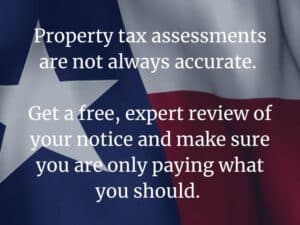When it comes to your property tax assessment, size matters and so does the way your land is divided. Understanding land size subdivision value is crucial because many property owners focus only on their building’s square footage. However, the land itself plays a major role in how your total value is calculated. Whether you’re dealing with multiple parcels, an oversized lot, or a newly subdivided property, it’s important to understand how these details impact your tax bill. Considering your land size subdivision value can also help.
At TexasPVP, we work with homeowners, investors, and landowners to uncover how land characteristics affect value, especially focusing on land size subdivision value. We also explore how to use that insight to strengthen a property tax protest.
How Appraisal Districts Use Land Data
County appraisal districts in Texas base property values on a number of factors. The land component is a major one. Here’s how they typically evaluate land size subdivision value:
- Lot size – Larger lots often carry higher values, but not always proportionally. There may be diminishing returns based on zoning or land use restrictions.
- Subdivision data – Properties in newer or more desirable subdivisions may be assigned higher values. This is based on comparable sales within the same area.
- Platting and parcel splits – A property divided into multiple lots or parcels may be assessed differently. This depends on how it’s recorded and how each section is used.
- Land use designation – Residential, commercial, agricultural, or vacant land all carry different valuation models, even within the same geographic area.
Understanding how these elements are measured and whether they’re accurate is critical to making sure you aren’t overpaying in taxes.
Common Issues That Affect Land-Based Valuations
Property tax assessments are not always accurate. Here are some common red flags that could lead to an inflated land value:
- Incorrect lot size or acreage – Errors in recorded square footage or acreage can lead to higher valuations.
- Overstated subdivision value – If nearby lots haven’t sold for years or recent comps are much lower, the CAD may still use outdated high values.
- Ignored access issues or easements – Landlocked parcels, utility easements, or floodplain designations can reduce market value. However, this may not be reflected in your tax assessment.
- Unrecorded subdivision changes – If you’ve recently combined or split lots, the CAD may not have updated records. This could lead to confusing or inaccurate assessments, affecting your land size subdivision value.
TexasPVP reviews land records and CAD data to identify these issues. We then build a case for correction when protesting your value.
How Subdivision Status Can Help or Hurt You
Whether your property is in a formal subdivision or a rural area with loosely defined boundaries, its categorization can impact its tax treatment:
- Subdivision premiums – Some neighborhoods or gated communities receive higher appraisals based on amenities, location, or recent sales trends.
- Lack of market data – Rural properties or custom land parcels may lack comparables. This may lead appraisers to estimate value using less accurate models.
- Developer-owned lots – These may be assessed differently from improved lots, especially if held as investment inventory.
If you own property in a developing area or hold multiple lots, knowing how your land size subdivision value is treated can help. You can spot inconsistencies or negotiate reductions.
What TexasPVP Can Do
At TexasPVP, we evaluate both land and building values during every property tax protest. Here’s how we help:
- Review lot size, plat, and parcel data for errors
- Analyze land value compared to similar properties in your area
- Identify adjustments for access, easements, or land use limits
- Ensure your subdivision is being compared to the right market
We don’t stop at surface-level data. Our team digs into appraisal district records, GIS maps, and property sales to ensure your land size subdivision value is assessed fairly.
Don’t Let Hidden Land Value Inflate Your Taxes
You might be surprised how much of your tax bill is based on land value, especially if your property has a large lot or sits in a high-demand area. However, you don’t have to accept the CAD’s assessment at face value. By understanding how land size and subdivision factors into the equation and knowing your land size subdivision value, you can challenge unfair valuations with confidence.
Need help your land value or filing a protest? Contact TexasPVP and let our experts fight for the lowest legal value on your behalf.






